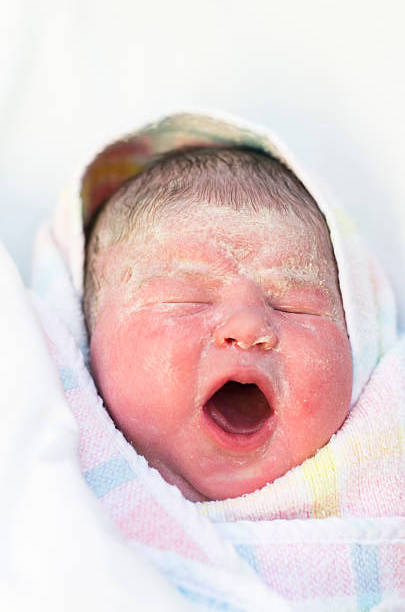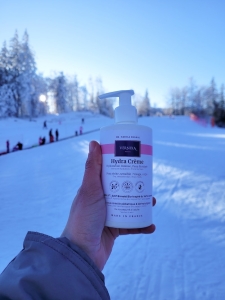Reading Time: mins
Skin health and immunity begin long before birth. The skin, our first line of defense against external threats, begins its development in the womb. This article explores the science behind the soft, protective layer known as Vernix Caseosa and its importance for newborns.
The history of epidermal immunity is truly fascinating. It begins in utero, where the skin barrier originates from the ectoderm. This barrier undergoes a series of carefully coordinated biological processes, such as periderm formation, keratinocyte differentiation, proliferation, cornification and maturation. The end result? A functional epidermis ready to protect the newborn.

One of the most remarkable elements of this epidermal development is the Vernix Caseosa. This substance is produced by epidermal cells that combine with sebaceous lipids. During the final stages of pregnancy, it covers the fetus, probably creating the right conditions for cornification. Think of it as the baby's natural moisturizer and shield in the womb.
Real-life example 1Have you ever noticed the creamy white substance on a newborn baby's skin? This is Vernix Caseosa. It's not something to be washed off immediately after birth; it's nature's way of providing initial skin protection.
Real-life example 2Many traditional cultures around the world leave Vernix Caseosa on the newborn for several days, in recognition of its protective properties.
Once the baby is born, there's a dramatic change from an aquatic environment to a dry, gaseous one. The skin's epidermal barrier begins to adapt within a few hours. It shows signs of reduced dehydration and less cohesion in the stratum corneum (the outermost layer of the skin). Over the next 2-3 months, this barrier undergoes significant changes, differentiating itself considerably from stable adult skin.
Real Example 3That's why the skin of newborn babies is so soft and delicate. It is still adapting to the outside world, hence the importance of using gentle care products.
An interesting observation is that the natural hydration factor (NHF), which results from filaggrin treatment, is higher in infants than in adults. This indicates that neonatal skin intrinsically offers immunity and protection against environmental factors. It also highlights the rapid development of the skin after birth.
Real-life example 4Have you ever wondered why babies' skin is so soft and moisturized? High levels of FNH play a crucial role in maintaining this texture.
At Vernixa®, we've harnessed the power of Vernix Caseosa to create our patented ingredient, Lipidic V®. Our 100% natural-origin products, such as Vernixa® Hydra Lavant and Vernixa® Hydra Creamare formulated with this bio-inspired ingredient. They aim to provide skin with the same natural protection and hydration that Vernix Caseosa offers newborns.
Real-life example 5Over 95% of customers noticed a significant improvement in skin hydration and texture after using our products, reflecting the natural benefits of Vernix Caseosa.
Understanding the science behind Vernix Caseosa and its role in neonatal skin health is essential. Not only does this highlight the wonders of nature, it also underlines the importance of science-backed skincare products. At Vernixa®, we're committed to combining science and luxury, to offer your skin the very best.
Reference: Immunity and Epidermal Function: Origins in Neonatal Skin
All Rights Reserved | Tous Droits Réservés GTIN Compliance Hydra Lavant | GTIN Compliance Hydra Crème



